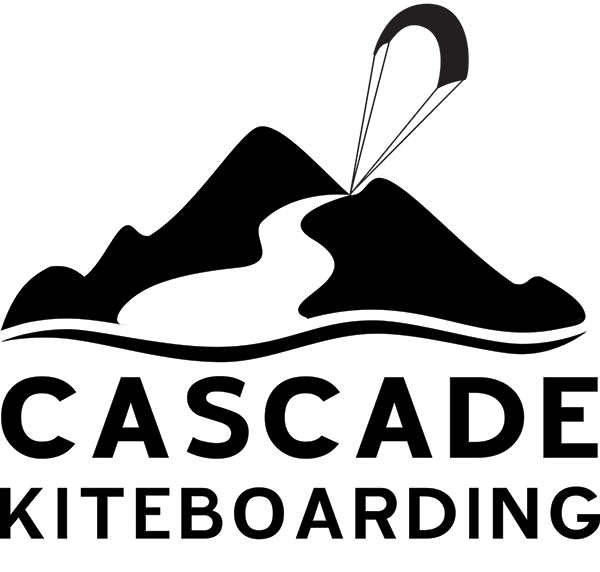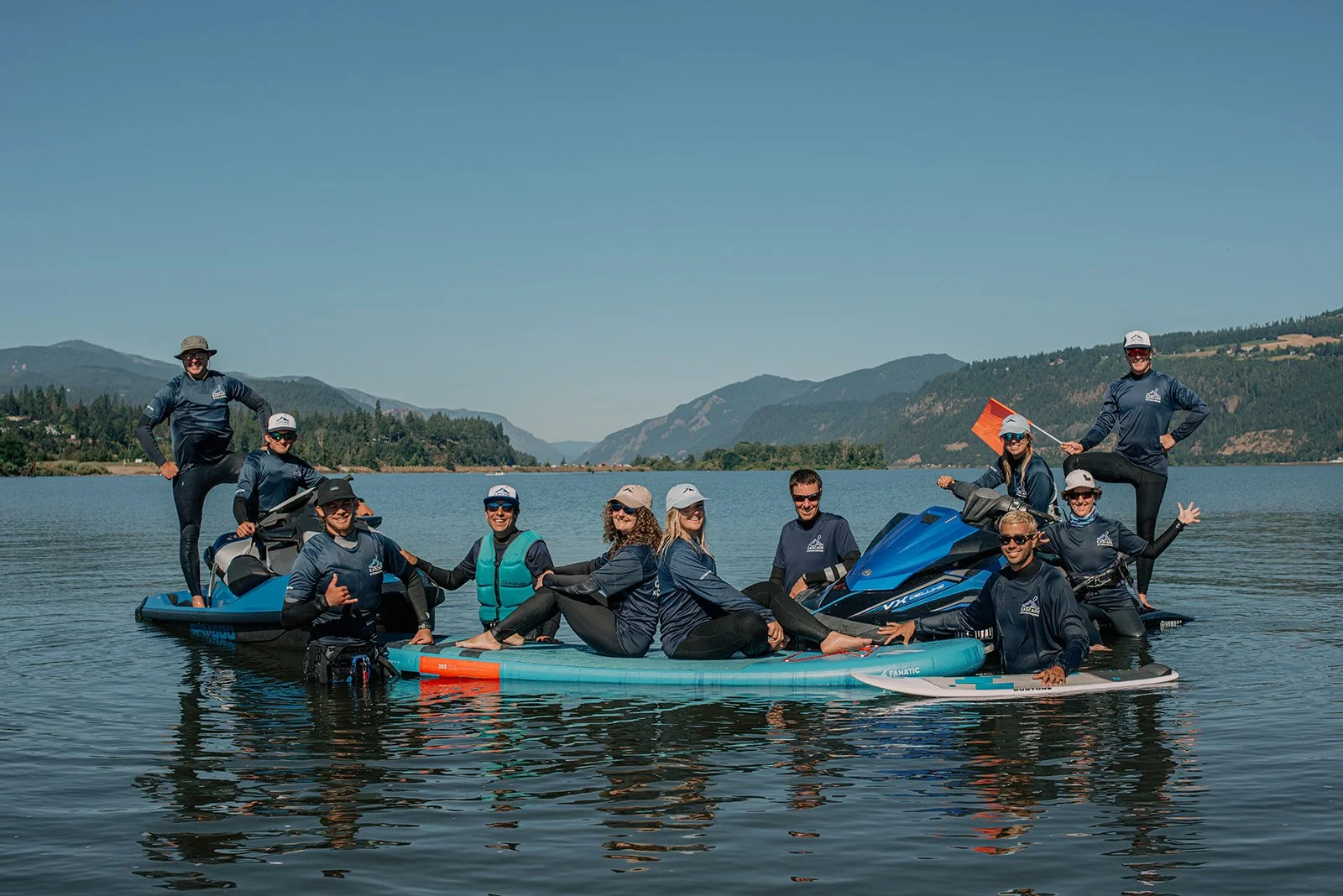The Dynamic World of kiteboarding
The Greatest thing about kiting is that there is something for everyone to enjoy. Whether you are used to big-wave surfing, shredding the cable park, or being a snow bunny on the mountain, there is a niche within kiting for you to enjoy.
Twintip
Twin-tipping is the first variation of kiting that most folks are introduced to. A twin-tip style board is essentially a wakeboard with bindings you can easily slip in and out of, instead of secured boots. Since the board can be ridden in both directions easily and you can hop off of it when crashing, its ease of use is why most people traditionally start with this style of kiting.
Beginner Friendly: Twin-tip kiting is typically the first variant of the sport that people are introduced to. This is because twin-tip boards are designed for ease of use and versatility. Unlike directional boards, twin-tip boards can be ridden in either direction without the need to turn the board around. This makes learning to ride much more intuitive for beginners. Additionally, the bindings on twin-tip boards allow for quick and easy entry and exit, which is especially helpful when you're just starting out and may find yourself falling frequently.
Old School Tricks: One of the biggest draws of twin-tip kiting is the ability to perform classic, old-school tricks. Tricks like jumps, spins, and grabs can be performed with relative ease on a twin-tip board. The symmetrical design of the board allows for seamless transitions between tricks, making it a favorite among freestyle riders. These tricks not only look impressive but also provide a great sense of accomplishment and thrill for the rider.
Wakestyle/Boots: Riding wake-style or in boots for kiteboarding is a thrilling choice for many enthusiasts due to the unique blend of power and precision it offers. Boots provide a secure and snug fit, allowing riders to exert more control and transfer more energy to the board. This setup is perfect for executing powerful tricks, hitting features like sliders and kickers, and achieving higher jumps. The additional support from the boots also helps in absorbing impacts from landings, making it a preferred style for those looking to push their limits in freestyle and wake-style kiteboarding. Overall, riding in boots enhances the connection between the rider and the board, resulting in a more dynamic and exhilarating kiteboarding experience.
Ideal Conditions: The ideal conditions for twin-tip kiting include consistent winds and flat water or small waves. Consistent winds are crucial for maintaining control and stability while performing tricks. Flat water provides a smooth surface that makes it easier to execute jumps and landings, while small waves add an element of fun without being too challenging for beginners. These conditions create a perfect environment for both learning and advancing your twin-tip kiting skills.
Overall, twin-tip kiting offers a user-friendly entry point into the world of kiting, with plenty of opportunities for progression and fun along the way. Whether you're just getting started or looking to refine your skills, twin-tip kiting is a fantastic choice that caters to a wide range of skill levels and interests
Kitesurfing
Kitesurfing offers a unique blend of the thrill of kiteboarding and the smoothness of surfing. Riders can use a traditional kiteboard or opt for a surfboard to ride waves or glide over flatwater, depending on their preference and skill level. Whether using straps for added control or going strapless for more freedom, kiteboarding on a surfboard provides a dynamic, exciting experience.
Using Straps vs. Going Strapless
Strapped riding provides more control and stability, making it ideal for tricks and jumps. The straps keep your feet secured to the board, offering solid connection during maneuvers. Strapless riding, on the other hand, offers more freedom and fluidity, especially when riding waves. It requires excellent balance and kite control, but many riders love the natural feel it provides, particularly in wave conditions.
Wave Riding vs. Flatwater Riding
Kiteboarding on a surfboard excels in both wave and flatwater riding. Wave riding involves using the kite to surf ocean waves, combining surfing skills with the added power of the kite for sharp turns and aerial maneuvers. Flatwater riding, however, offers a smoother experience, perfect for freestyle tricks, speed runs, and kite control. Flatwater conditions provide a great environment to master technical maneuvers and boost your confidence.
Ideal Conditions
For wave riding, steady winds of 15-25 knots and clean, consistent waves are ideal. Coastal beaches or open ocean spots are perfect for this. For flatwater riding, lighter winds of 12-20 knots and calm water conditions, like lagoons or sheltered bays, offer the best environment for freestyle tricks and speed.
Kitesurfing offers versatility, whether you’re hitting the waves or cruising flatwater. With the right conditions, it’s an exhilarating way to combine kiteboarding with the smooth flow of surfing.
Kite-Skim
Freedom on the Water
Kiteboarding on a skim board is a unique and exciting way to ride the waves, combining the fast-paced nature of kiteboarding with the playful feel of skimboarding. Skim boards are typically smaller, thinner and finless, and more flexible than traditional kiteboards, allowing riders to perform sharp turns, slides, and tricks with ease. One of the main advantages of using a skim board is the lightweight design, which offers increased maneuverability and makes it easier to execute technical moves like spins and slashes. It’s also great for shallow water, as skim boards allow riders to quickly glide across the surface without sinking. However, the trade-off is that skim boards lack the stability of a larger kiteboard, which can make it harder to ride in choppy conditions or with strong winds.
Ideal Conditions
Skimboarding is best suited for light to moderate wind conditions, generally around 12-22 knots, and flatwater or small wave environments. Ideal locations for skimboard kiteboarding can include shallow lagoons or coastal areas with consistent, gentle winds, where riders can enjoy the freedom of riding close to the shore and experimenting with tricks.
Foiling
Foiling is a newer and exciting development in kiteboarding that uses a hydrofoil to lift the rider above the water, providing a smooth, high-speed ride. Whether you’re riding in light winds, racing, or enjoying flat chop or waves, kite foiling offers new possibilities for riders.
Light Wind Performance
Kite foiling excels in light wind, allowing riders to glide even in winds as low as 8-12 knots. The foil lifts the board off the water at lower speeds, enabling kiteboarders to ride when traditional kiteboarding might not be possible.
Racing
Kite foiling has become a popular racing discipline (see Olympic debut in 2024!), with events like the Kite Foil Gold Cup. The foil’s efficiency allows for high speeds, and racing requires precision, skill, and an understanding of aerodynamics for successful performance.
Can Ride Flat Chop or Waves
Foils glide smoothly over flat chop, reducing drag and offering a stable ride. In waves, kite foiling provides a fast, smooth experience, allowing riders to carve through waves or glide over them with minimal impact, making it highly versatile.
Ideal Conditions
Foiling can be done in almost any wind-speed, you may just want to adjust your kite size accordingly. Where foiling really shines is on those light wind days when others are struggling to get by on a twin-trip or surfboard. Foils thrive in calm waters with steady winds, but they can also handle chop and small waves, making them versatile for various conditions.
Snow Kiting
Snow kiting is an exhilarating winter sport that combines kite flying with skiing or snowboarding, allowing riders to harness the power of the wind to glide across snow-covered landscapes. Whether you're on a mountain, open plains, or frozen lakes, snow kiting offers an exciting way to explore winter terrain, offering both adrenaline and serenity in one sport. With the right gear and conditions, snow kiting provides a unique and thrilling experience on snow, just like kiteboarding does on water.
Skis vs. Snowboard
One of the great things about snow kiting is the flexibility in choosing your equipment. You can ride either skis or a snowboard, depending on your preference and style. Skiers will find it easier to maneuver and control the kite in the snow, as skiing offers greater stability and control over different terrains. Skis are also ideal for quick direction changes and handling various snow conditions. Snowboarders, on the other hand, may enjoy a more fluid, surf-like experience, using the kite to help carve through powder or glide across snow-covered fields. Snowboards can be a bit trickier when it comes to turning and controlling speed, but they offer a great sense of freedom and flow, especially in deeper snow.
Ideal Conditions
The ideal conditions for snow kiting include a steady, moderate wind of around 10-20 knots (12-25 mph), with clear, open terrain and fresh snow. Snow kiting works best on areas like frozen lakes, open fields, or gentle slopes where the wind can blow consistently. Fresh, powdery snow offers the smoothest and most enjoyable ride, while icy or crusty snow can be more challenging and less forgiving. Safety is key, so it's essential to ensure that the terrain is free of obstacles, and you should always check the wind conditions before heading out.
Whether you’re skiing or snowboarding, snow kiting adds a new dimension to your winter sports experience. It’s a thrilling way to blend the power of the wind with your love for snow, making it an unforgettable activity for winter enthusiasts.
conclusion
We hope this post has opened your mind to the endless adventures that learning to kiteboard can take you on. There are a number of great things about kiting, but what stands out the most is that your journey never really ends, and the progression is always transforming. Though some of us may prefer to slash the waves, while others are seeking to push the limits in boots, this incredible sport is what brough the Cascade team together, and for that we are forever thankful.

